
THE DEVOTION TO CREATE LOCODOR IS SIMPLE: CROWDFUNDING FOUNDERS & BACKERS NEED A COMMUNITY. SO WE ARE IN THE JOURNEY ON CREATING ONE.
Today isn’t just about our beta version of our site (LOCODOR) — it’s about why we launched it. For those people that are part of the CrowdFunding world, we all witnessed a massive expansion in the last few years. Crowdfunding has helped over a million startups get from idea to launch. Most of what startup founders are looking for is raising capital, finding mentors, and acquiring customers. Behind the curtain, we’ve been working on something far bigger than just another platform to fund your startup. Our ambition is our community. [gallery columns="1" size="medium" ids="2725"] Bringing the Crowdfunding community together has always been our greatest goal. This site launch has given us the opportunity to make it happen, and offer our vision for a new voice and a fresh narrative for Founders & Backers alike. Most significantly, we want to create the grounds in which to build a global community of startups who can truly help each other grow in an open-space and free social media network. We think startups desire a new narrative concentrated around transparency, sharing and knowledge of business nitty-gritties. We’re building a community to share together. The Crowdfunding community needs improvements nowadays. We’re led to believe that ideas alone get funded, and that people succeed on Kickstarter and Indiegogo simply by creating a campaign. You don’t become the next Facebook magically. In a world that’s become defined by big funding and big exits, we’ve lost touch with the stuff that matters: building relationships, growing our network, and market yourself. And this is why we are proud to launch LOCODOR. Let’s together build a community for Crowdfunding professionals. LOCODOR for the Crowdfunding Community
Read More
HOOKED: The trick is to take that familiar business model and do it a little differently.
People Don’t Want Something Truly New, They Want the Familiar Done Differently. This article is inspired by the book; Hooked: How to Build Habit-Forming Products - by: Nir Eyal The main point I got out of this book (that I read over a year ago) is that we are still stuck on the familiar. The trick is to take that familiar and do it a little differently. Interestingly, we noticed this fact applies to innovation and technology the most. We can take Windows 10 and Facebook as examples. Windows 10 is a lot different then Windows 7 and consumers couldn't adapt to the new look. Most people still prefer the older Windows with just better features. The same is true with Facebook. No one wants a new Facebook, users just want Facebook with better features. Here is a Video about the book HOOKED: [embedyt] https://www.youtube.com/watch?v=hVDN2mjJpb8[/embedyt] “New and improved” is great for things we are already familiar with . This is what I got out of this book. LOCODOR is doing just that "New and Improved" Crowdfunding Platform. We are not 100% there yet, and we are making improvements all the time. The main mission is to make CrowdFunding Social. Communicate your Campaign with Backers that are on the fence to Invest in your Startup, that way you won't miss out on backers.
Read More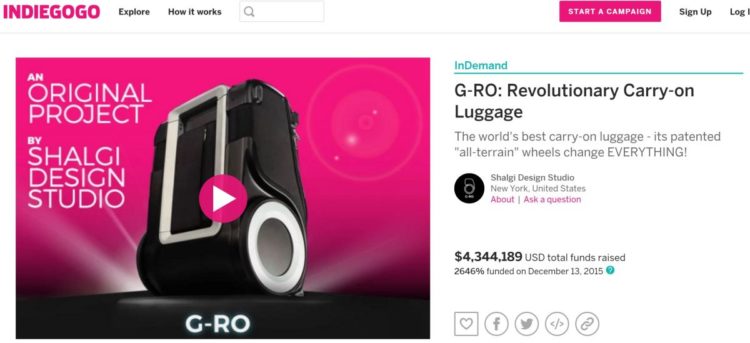
Real CrowdFunding Success Story: G-RO Revolutionary Smart Luggage raised over $3 Million - Now Available
It has been two years since the launch of G-RO: Revolutionary Carry-on Luggage which is now Available on Amazon LaunchPad. Amazon LaunchPad is a a program designed with startups in mind. As Amazon descri bes it, “Amazon Launchpad makes it easy for startups to launch, market, and distribute their products to hundreds of millions of Amazon customers across the globe.” Jennifer Petoskey, Launchpad's senior marketing manager says. Moreover,"Launchpad is like having an amplifier for what you as a startup is trying to do." With the likes of Crowdfunding platforms, venture capitalist firms, and seed accelerators, startups have a plethora of resources at their disposal. While the process of turning concept into product has become more achievable, addressing factors such as marketing and distribution channels still stand as sizable hurdles crucial to your business’ success. Only over-funded Crowdfunding Campaigns that are unique gets selected. And that's where G-RO: Revolutionary Smart Carry-On Luggage comes in. With the success of raising a little over $3.3 Million dollars on KickStarter, G-RO is now a thriving corporation that is selling thousands of Luggage's around the world. You heard this type of story before. A young and ambitious entrepreneur taking a major risk to make his dream come true. The same is true with the founder of G-RO. Photo credit: http://www.pearlmandaniel.com Netta Shalgi, an industrial designer by education, a hungry entrepreneur and a traveler from a young age, has always been fascinated with mechanics, creation and bringing things to life. From his first project melting down Legos and turning them into new Legos that allowed him to build what was in his imagination to his creation of G-RO, Netta’s passion has been taking the blueprints in his mind and turning them into products that people can use and enjoy.Ken Hertz, a strategist, lawyer and frequent traveler who lives out of his luggage over six months a year, wanted to save all his “travel brothers and sisters” in the business journey. Ken and Netta combined their ideas about improving travel and used them to develop a hero product. In 2010, they established a new company, Travel-Light LTD. Its goal is to create innovative standards that meet the traveling challenges faced in the 21st Century and to deliver high quality products at competitive prices for the growing population of commuters. From concept, to launching a Crowdfunding Campaign, to selling Millions on Amazon. Now that is a Success Story to be told. What makes this carry-on special? G-RO was designed with innovative, game-changing features. Comprised of two axle-less and extra-large diameter wheels, these patented, all-terrain wheels are engineered to feel lighter, roll easier and last longer. Additional groundbreaking features of the G-RO travel bag include its ergonomic handle, state-of-the-art location tracker and electronic charging station, including an exterior workspace with a built-in tablet stand. Also included is an expandable option allows for even more packing space to transport all personal belongings. To see and/or purchase the G-RO: Revolutionary Carry-on Luggage please check-out our purchase now listings:
Read More
The Global Webit Europe Community in Sofia is LIVE now: Featuring our Exclusive Startup Aydrate
WEBIT FESTIVAL EUROPE re:Inventing Europe’s Future Webit, a global community of people fascinated by technology and fostering the digital transformation in the business and the society. Webit focus is on global issues, innovation and things that change the world. Connecting top leaders from the business, governments, academia and startups who re:Invent the future of the world. The Global Webit Community and the Series of Events is as follows: (Webit.Festival Europe in Sofia, Webit.APAC in Istanbul, Webit.MENA in Dubai, Webit.EMEA in Istanbul and Webit.INDIA in New Delhi) are bridging digital Europe, Middle East, Africa and Asia! #Webit Congress In addition to the 200-plus speakers who create a challenging and informative agenda across two streams — the Digital Marketing and Innovation Conference and the Leaders of the Future Tech Summit — Webit Congress is also host to the Founders Games, a chance for startups to get their hands on a share of a 1 million euro (U.S. $1.32 million) grant. Over 1,600 startups applied for this year’s games, and up to 200 of those will receive a free expo table at the Congress, free tickets to the event, and a share of the grant money to use within advertising. One of the 200 Startups that was picked to Pitch their Startup is a company called Aydrate, based in Tel Aviv. Aydrate has developed a hydration analysis system for athletes. It is comprised of a hydration pack, smartphone app, clip-on sensor, and Cloud-based big data analysis. As users play sports, Aydrate analyzes water intake. The system collects hydration data to coach users in improving athletic performance and minimizing dehydration. The system can also calibrate exactly how much water users should carry when packing for an outdoor activity. It ultiamtely maximizes performance and keeps athletes healthy. LOCODOR just launched AYDRATE's Crowdfunding Campaign today. Omri Kedem the CEO will be pitching at Webit Congress to main exposure and possibly land a VC or Angel Investor. He will also mention and promote LOCODOR and his Crowdfunding Campaign at the event. Please stand by for more information, pictures, and press.
Read More
5 Ways to Know Whether You Have the DNA of an Entrepreneur
5 Ways to Know Whether You Have the DNA of an Entrepreneur By Brian D. Evans Persistent people who seek creative freedom often crave entrepreneurship. March 18, 2017 It seems that in today’s society, being an entrepreneur makes you some sort of rockstar. The title itself has an appeal that makes anyone and everyone with an idea suddenly want to call themselves an entrepreneur. But being a true entrepreneur is not an easy road. Most entrepreneurs have made money -- and lost money. It's normal to have had struggles and successes. The question is whether you have the DNA to see it through, or if you feel compelled to stick with a secure office job as soon as your first venture idea fails. And honestly, there’s nothing wrong with that -- entrepreneurship isn't for everyone. Here are five indicators that will help you determine whether the tough road of entrepreneurship is right for you. 1. You struggle to learn without hands-on experience. A very common theme I have found among my entrepreneurial network is that the vast majority of entrepreneurs learn by doing. This is why you hear about successful entrepreneurs failing out of school. Not because they wanted to prove a point, but because the school environment did not serve them. They weren’t learning anything from someone else talking at them. The need to get your hands dirty is a crucial trait of an entrepreneur. 2. You are patiently impatient. Kids with entrepreneurial spirits often get labeled as being “impatient.” They can’t sit still. They have low attention spans. But as these kids get older, they develop what is better described as the ability to be “patiently impatient.” They don’t want to slow down -- and they shouldn’t. But they also are very good at waiting for the right time to pull the trigger on decisions. If you can be both at the same time -- patiently impatient -- then you are right where you need to be. 3. You don’t take “no” for an answer. There is a difference between being obnoxiously persistent and humbly persistent. The people who get told “no” and refuse to acknowledge helpful feedback are grandiose dreamers, not grounded in reality. But the people who get told “no” and then take the time to listen, learn, adjust and keep moving forward possess a true gift for persistence. 4. You like to "own" your work. One of the big reasons that people with entrepreneurial spirits struggle in corporate environments is because they feel as though they don’t “own” their work. It’s a combination of either not being given enough creative freedom, or having so many checks and balances in place that nothing actually gets done effectively. Being an entrepreneur is tough, but the ability to take charge of your work is the real reward. 5. You aren't after money. You're after freedom. Your intention sets your path. You have to know what your motivations and goals are, otherwise you’ll chase the wrong things and end up somewhere you aren’t thrilled about. True entrepreneurs seek freedom -- and the definition of freedom is subjective. It’s more about a lifestyle than a benefits package or an end-of-the-year bonus. Chase the lifestyle, not the paycheck. https://www.entrepreneur.com/article/285955
Read More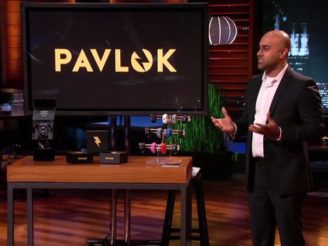
Shark Tank fight over Pavlok and What Happened After the Founder Rejected Kevin O’Leary’s Offer
Maneesh Sethi is the CEO of “Pavlok,” a wristband device designed to help you wean off bad habits like smoking or nail biting. Pavlok works by shocking you through a push of a button every time you succumb to a bad habit. This is a form of aversion therapy. PAVLOK NOW AVAILABLE ON LOCODOR. [embedyt] http://www.youtube.com/watch?v=in4mAqHn_d4[/embedyt] In late 2014, a "Shark Tank" producer reached out to Sethi to ask him if he wanted to apply to the show. The producer had noticed Sethi's successful IndieGoGo campaign for the Pavlok wristband, which through either a manual or automatic prompt shocked its wearer when performing a bad habit. Using conclusions from existing research on Pavlovian conditioning, Sethi created it with the intention of linking bad habits with an uncomfortable reaction so that the habit could cease being enjoyable. When he eventually made it to the "Shark Tank" set last September, Sethi was looking for 3.14% equity in his company in exchange for $500,000, giving Pavlok a valuation of $15.9 million. He told the Sharks that through the sale of some prototypes and then pre-orders of the $200 final product, he had sold $800,000 worth of his wristbands, which were going to ship the next week. After some more back and forth, Lori Greiner and Cuban pulled out for lack of what they deemed sufficient evidence. Barbara Corcoran went out because she didn't like the product, and Robert Herjavec didn't make an offer because even though he actually found the product interesting, he couldn't justify the $15.9 million valuation. O'Leary started his reply by telling Sethi, "You're a combination of spontaneous combustion and ADD. I'm not kidding. It's very difficult to listen to you." But then he told him that he had studied aversion therapy as an undergraduate and found Pavlok to be interesting. To avoid meeting Sethi's valuation, O'Leary offered the $500,000 as a loan at 7.5% interest for 24 months in exchange for 3.14% equity. Sethi looked wary. "This is the problem," he said. "Damn. The problem, Mr. Wonderful, is that we're not focused on the money. We're focused more on the habits ... Our biggest goal is to break bad habits around the world. Mr. Wonderful, I just can't work with you." [embedyt] http://www.youtube.com/watch?v=JyHRYh3DwzY[/embedyt] Maneesh Sethi, the founder of consumer-electronics company Pavlok, prompted this response when he explained that he had to turn down O'Leary's offer, even after the other Sharks pulled out, not because of its terms but because of O'Leary's personality. "I would take an offer from anybody besides Mr. Wonderful," Sethi said, using O'Leary's nickname. [embedyt] http://www.youtube.com/watch?v=aiaosqL0x4w[/embedyt] SHARK TANK FILMED IN SEPTEMBER, 2015. HERE'S WHAT'S NEW. Over 10,000 people have used Pavlok (See Stories of Pavlok Users) Pavlok has helped thousands break and change bad habits We've created courses to train different bad habits We've integrated with IFTTT (this includes Fitbit, SMS, GPS, Amazon Echo, etc) We've created the Productivity Chrome Extension to cut down on tabs, blacklist website
Read More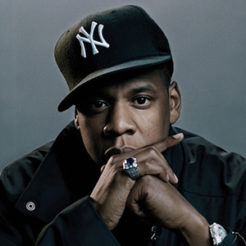
Jay Z launches new Platform "Arrive" to fund early-stage Startups, offer branding support to flourish.
Seems everyone is getting their hands on the Next Big Startup. Now even the Hip-Hop Genius Jay-Z just announced that he will be launching a platform to offer investment of capital as well as assistance with business development, branding and more to help those select Startups flourish, per the official announcement. Shawn "JAY Z" Carter, announced an innovative new platform, ARRIVE, that will partner with a select group of early stage start-ups by providing them with brand services, business development, advisory and capital to drive growth in their organizations. "ARRIVE was created to leverage our experience and resources in building brands, developing consumer facing businesses, managing artists and representing athletes. We've opened that diversified, global range of expertise to a new vertical: entrepreneurs and their early stage businesses" said Neil Sirni, Head of New Ventures at Roc Nation. ARRIVE also anticipates the launch of a traditional venture fund in order to, among other activities, support existing portfolio companies through their subsequent growth stages. ARRIVE was formed through a collaboration with Primary Venture Partners ("Primary") and GlassBridge Asset Management ("GlassBridge"). Primary will serve as a venture advisor and GlassBridge, a subsidiary of GlassBridge Enterprises Corp. (GLA), will provide institutional and operational support. Primary Venture Partners co-founder and General Partner, Ben Sun, said, "What Roc Nation has built so far is a true testament to their vision, capabilities and willingness to dig in and take their companies to the next level. We are thrilled to partner with the amazing team at ARRIVE and to leverage these unique resources to build the next generation of powerful brands." In addition to ARRIVE, Roc Nation intends to formalize its focus on social impact investing later in 2017. Separately, Roc Nation and its principals continue to strengthen various partnerships to expand its presence in the high growth, early stage community. Arrive’s unique sales pitch to potential investment targets revolves heavily around its experience in brand building — the company is unique among VC firms in terms of its exposure to the task of managing and building up artists, as well as athletes. It’s hoping to leverage that experience into something a bit different from the status quo in venture capital, according to the release, which could be a very appealing edge indeed to consumer-focused startups looking to accelerate their growth. Roc Nation is working with Primary Venture Partners and GlassBridge Asset Management to form the new firm, with Primary acting as a venture advisor to guide investment, and GlassBridge offering business infrastructure support. Arrive itself doesn’t yet control a fund — the press release suggests it’s in the plan, however, with the aim of building a resource that can be put into both existing portfolio companies and investing in new ones. Jay Z has already invested in a number of startups, both independently and via Roc Nation, including Stance, Uber and more.
Read More
MWC 2017: all the biggest launches and the next generation technology
MWC 2017: Mobile World Congress 2017 is the world’s biggest phone show. The launches of MWC 2017 All the phone, tablet and wearable launches of MWC so far... LG G6 The G6 is a possibly game-changing phone from LG, which has dialled back on innovation to deliver a simply solid handset. Read more: Hands on: LG G6 review LG X Power 2 LG's new X Power 2 may offer great battery life and an attractive design, but it's limited in storage and doesn't feature a high-resolution screen. Read more: Hands on: LG X Power2 review Sony Xperia XZ Premium A strong phone from Sony with excellent innovation in the screen. However, it all depends on how much this monster of a phone will cost, and whether the streamed 4K footage actually looks good on here at all. Read more: Hands on: Sony Xperia XZ Premium review Sony Xperia XZs The smaller of Sony's new flagship phones does lack on specs in some respects, but that's not necessarily a bad thing... it all depends on whether it comes with a correspondingly low price. Read more: Hands on: Sony Xperia XZs review Sony Xperia XA1 the Sony Xperia XA1 is a great-looking phone on the table, and the low specs should equal a palatable, low price. Read more: Hands on: Sony Xperia XA1 review Sony Xperia XA1 Ultra The Sony Xperia XA1 Ultra is a massive phone, but one that operates well enough under one finger (if you can hold it straight, that is...) Read more: Hands on: Sony Xperia XA1 Ultra review Moto G5 The Moto G5 is being touted as a "premium for all" smartphone, but it won't be launching in the US, unlike the slightly bigger Moto G5 Plus. Saying that, the Moto G5 is the budget phone with little compromise. Read more: Hands on: Moto G5 review Moto G5 Plus Moto's good reputation in the budget phone market is likely to be furthered by the G5 Plus, It carries on the best traits from the G4 Plus, but improves upon it in some meaningful ways that could make it a no-brainer to purchase. Read more: Hands on: Moto G5 Plus review Huawei P10 The Huawei P10 looks to be a great phone you'll love if you're upgrading from a two year old handset, but not much has changed here to keep true Huawei fans thrilled by the flagship line. Read more: Hands on: Huawei P10 review Huawei P10 Plus While disappointing to see hardware specs making a re-re-reappearance, the Huawei P10 Plus is a bigger, slightly better version of the slick P10. Read more: Hands on: Huawei P10 Plus review Nokia 6 The Nokia 6 blends premium design, solid specs and an affordable price tag into a handset which could well put the brand back on the mobile map. Read more: Hands on: Nokia 6 review Nokia 5 For the price, the Nokia 5 seems to offer an excellent selection of features, but it’s surrounded by equally capable handsets above and below it. Read more: Hands on: Nokia 5 review Nokia 3 The Nokia 3 looks to be a strong budget offering and its stylish design and extremely low price tag could shake up the market. If you want more options, though, opt for the Nokia 5 or go premium with the Nokia 6. Read more: Hands on: Nokia 3 review Nokia 3310 For those who fondly remember the Nokia 3310 the new model will almost be a no-brainer of a purchase. Its low price, pleasing feature set and long battery life make it appealing for anyone looking for a back-up handset, festival phone or just a simple retro buy. Read more: Hands on: Nokia 3310 review ZTE Blade V8 Lite The ZTE Blade V8 Lite is true to its name, offering a smartphone that's light on powerful specs but provides a more than adequately bright 1080p display. It's going to be affordable when it launches in Italy, Germany and Spain, and it's aiming to rival the Moto G5 with its budget-friendly features and design. Read more: Hands on: ZTE Blade V8 Lite review ZTE Blade V8 Mini The ZTE V8 Mini Pro provides a quick upgrade to new software and features, with Android 7.0 Nougat onboard and a dual-lens camera that produces photos you can refocus. It has a budget-friendly Qualcommm chipset that makes it affordable if you're on a tight budget. Read more: Hands on: ZTE Blade V8 Mini review Haier L7 The Haier L7 is a perfunctory addition to the unremarkable everyman ranks of upper middle range Android handsets. Read more: Hands on: Haier L7 review BlackBerry KeyOne The BlackBerry KeyOne has an odd name, odd design and is all round just a bit odd. The full physical keyboard will interest hardcore fans, but there are better Android phones on the market for the general public. Read more: Hands on: BlackBerry KeyOne review Huawei Watch 2 The Huawei Watch 2 may fulfill your every need with its impressive suite of sensors and improved battery life, but the design may keep you waiting for what comes next. Read more: Hands on: Huawei Watch 2 review Huawei Watch 2 Classic The Huawei Watch 2 Classic is a stylish wearable, and a tempting option if you want to get Android Wear 2.0 on your wrist, prefer a more formal look than the Watch 2 and aren’t looking for extensive fitness features. Read more: Hands on: Huawei Watch 2 Classic review Sony Xperia Ear It's far too early to pass judgement on these new wearables, but while they're still largely pointless at this stage the direction Sony is taking - making wearable accessories more useful and attractive - is a great thing to see. Read more: Hands on: Sony Xperia Ear open-style review Lenovo Tab 4 Lenovo's new tablet range puts value ahead of tech specs, but its first-class design basically makes up for it. The line-up is missing a stand-out feature, but that's about as bad as it gets here. Read more: Hands on: Lenovo Tab 4 review Samsung Galaxy Tab S3 The Tab S3 has a lot in common with 2015's slate, with some good spec upgrades. The screen doesn't look as bright as it could, but the new design and focus on productivity could pay dividends. However, Android still isn't the best operating system for a tablet, and there's not a lot Samsung can do to push past that. Read more: Hands on: Samsung Galaxy Tab S3 review Samsung Galaxy Book The Galaxy Book appears to bring small, but meaningful updates to last year's Tab Pro S, but we won't know how it stands up to everyday tasks until the full review. Read more: Hands on: Samsung Galaxy Book review Porsche Design Book The Book One is about as alluring as Ultrabooks come, pairing a stunning design with performance that will likely stack up with the leaders, like the Microsoft Surface Book. Keep your eyes on this one. Read more: Hands on: Porsche Design Book One review Sony Xperia Touch A novel concept, but one we can't see being too alluring in this iteration. However, make it slimmer, more portable and brighter, and there's a lot to like about having a 23-inch tablet in your pocket at all times... Sony's onto something here, but the Xperia Touch has a long way to go before this is a must-have product. Read more: Hands on: Sony Xperia Touch review Samsung Gear VR Controller The Samsung Gear VR Controller finally brings a gamepad to the popular virtual reality headset, and it's better late than never. It includes all of the buttons that are mounted to the side of the headset, so you're no longer tapping your temple to move about in VR. It also has promising motion controls. Read more: Hands on: Samsung Gear VR Controller review LG at MWC 2017 LG G6 release date, news and features Hands on: LG G6 review Hands on: LG X Power2 review LG G6 The LG G6 was the first big phone to be announced at MWC 2017. Modular is out and in its place is a phone that's pretty much all screen. LG has managed to squeeze a 5.7-inch screen - QHD+ FullVision display with an 18:9 aspect ratio - on to a handset that feels like it's been built for a 5.3-inch screen. The new design does mean that the battery is sealed within the chassis now. What you get is a bigger battery, though, at 3300mAh. There's 32GB on-board storage and two 13MP cameras - ones on the front and back. This is a first in a smartphone and a great move by both LG and Dolby - bringing what's arguably the best HDR tech on the market to phones. All of this is powered by a Snapdragon 821 chip. LG X Power2 LG also announced the LG X Power2 - a phone that claims to have two days' worth of battery power - this is because it has been given a 4,500mAh battery pack. Our reviewer felt the phone had an attractive design but it's limited in storage and doesn't feature a high resolution screen. There’s a respectable 13MP rear shooter on the X Power2 and a 5MP for selfies. Sony at MWC 2017 Hands on: Sony Xperia XZ Premium review Hands on: Sony Xperia XZs review Hands on: Sony Xperia XA1 review Hands on: Sony Xperia XA1 Ultra review Sony Xperia XZ Premium Sony launched four phones at MWC 2017, focusing on developing its XZ brand into a premium smartphone option and also offering a more budget-friendly XA line-up. The Sony Xperia XZ Premium is Sony's flagship and comes packing excellent innovation in the screen. All of this will come at a cost, though - so we're holding our breath until Sony releases prices. The XZ Premium sees Sony sticking to a 4K screen. It uses a Snapdragon 835 chipset, has a sizeable 5.5-inch 4K display with HDR, Android 7.1.1 and to top it all off, there's top-end water resistance as well. Sony Xperia XZs The Sony Xperia XZs is a strange beast. It's not the company's flagship but it's not a mid-range model either. Its smaller than the other XZ models and comes with a lower spec - it uses the Qualcomm Snapdragon 820 rather than the new Snapdragon 835. The screen is Full HD and 5.2 inches in size and its been given the same 19MP camera sensor as its more expensive brethren. Sony Xperia XA1 The Sony Xperia XA1 range for Sony is pitched at a younger phone owner. It's got a 6-inch screen which puts it into phablet territory. It's got a 23MP rear sensor and 8MP sensor too. This is the tech that was on Sony's 2015 range, so it's good to see it trickle down into its mid-range phones. The screen is 1080p and there's 3GB of Ram on board, which means it shouldn't grind to a halt too often. Sony Xperia XA1 Ultra The Sony Xperia XA1 Ultra is a similar phone but you get a 16MP camera on the front, perfect for those selfies. There's no word as to whether these phones will come to the UK and US but we are currently speaking to Sony to see what the situation is. Sony Xperia Ear open style It’s far too early to really know whether giving these concept hearables will be worth buying but the Sony Xperia Ear open style do look pretty cool. If they’re great for sport then that will go a long way to making them useful, as being able to hear music and the crowd / marshalls in a race is a must-have element for any runner that’s been nearly run over by a car. Samsung at MWC 2017 Hands on: Samsung Galaxy Tab S3 review Hands on: Samsung Galaxy Book review Samsung Galaxy S8: release date and everything you should know Hands on: Samsung Gear VR Controller review Samsung Galaxy 8 tease A new Samsung Galaxy flagship is often the highlight of MWC, but this year we knew we weren't going to get one, as the company had confirmed that the Samsung Galaxy S8 wouldn't be present, which also meant you could count the Galaxy S8 Edge out. But Samsung still wanted to make the S8 the star of the show by teasing what is not confirmed but almost definitely is its new flagship. In its conference, it put up an image that said: Unbox your Phone and that there will be an event both in London and New York for a new Galaxy on 29 March. The graphic teased a phone that will be almost bezel free, so expect a brand-new design from Samsung. Samsung Galaxy Tab S3 When it comes to actual real devices, Samsung launched the Samsung Galaxy Tab S3 at MWC 2017. The tablet is a bit of an iterative update, but that's no bad thing. What you get is a light tablet at 429g and 6mm thing, one that has 32GB of on-board memory, uses USB Type-C and a 9.7-inch display - sadly not AMOLED but still a lovely 2048 x 1536 QXGA spec. Oh, and you also get a bundled S-Pen. If you don't like that S-Pen, then you will love the team up between Samsung and pencil manufacturer Staedtler. They have created an S-Pen that looks like an old-school pencil. It has a great retro look! Samsung Galaxy Book Samsung also announced a new 2-in-1, the Samsung Galaxy Book. Essentially an update of the Tab Pro S, the Galaxy Book leans in on creativity and versatility much like the Microsoft Surface Book, and comes in two sizes: a 10.6inch model (with dual-core Intel Core m3 at 2.6GHz) and 12-inch version (with a dual-core Intel Core i5 at 3.1GHz). This device also comes with a S-Pen, which is a first for a Windows product. Samsung Gear VR Controller The Samsung Gear VR Controller finally brings a gamepad to the popular virtual reality headset, and it's better late than never. It includes all of the buttons that are mounted to the side of the headset, so you're no longer tapping your temple to move about in VR. It also has promising motion controls. Huawei at MWC 2017 Hands on: Huawei P10 review Hands on: Huawei P10 Plus review Hands on: Huawei Watch 2 review Hands on: Huawei Watch 2 Classic Huawei P10 We always new the Huawei P10 and Huawei P10 Plus were coming to MWC 2017 as they had been confirmed a while back. But, now the phones are official we have had a play. The Huawei P10 is a limited upgrade to a major player. It's the company's flagship and while it's a decent contender against the giants of the mobile world, if you already have the Huawei P9, there may not be enough here to get you to upgrade. Design wise, it has been tweaked. It's lost the curves of the P9, opting instead for a device that's easier in the hand. There's also now a fingerprint sensor on the front of the phone. Inside, the phone is powerful, thanks to the Kirin 960 chipset. The camera has been upgraded too. Huawei P10 Plus There's a 12MP color sensor working in tandem with a 20MP monochrome version. So, some decent changes. Unfortunately that can't be said about the screen - as the P10 has a Full HD screen. If you want to go QHD, then you need to opt for the Huawei P10 Plus. Huawei Watch 2 As well as the two phones, Huawei also launched two new smartwatches: the Huawei Watch 2 and Huawei Watch 2 Classic. The Watch 2 comes with an impressive suite of sensors and improved battery life, but the design may keep you waiting for what comes next. That's because the design is very much sports focused. But then so are the features. There's GPS, a heart rate monitor and it's splash and dust proof. Huawei Watch 2 Classic If you fancy something that looks, well, more like a watch then the Watch 2 Classic is a more basic version of its bedfellow. Both watches run Android Wear 2.0 so expect Google Assistant smarts, and there's NFC on board too. ZTE at MWC 2017 Hands on: ZTE Blade V8 Mini review Hands on: ZTE Blade V8 Lite review Hands off with the ZTE Gigabit ZTE Gigabit Stealing the MWC 2017 crown for hyperbole is ZTE, with the ZTE Gigabit. Announced at the show, the phone is said to be 'the world's fastest smartphone'. It reckons the Gigabit is able to reach download speeds of 1Gbps, or ten times current smartphone speeds and this is all thanks to 'a Pre5G Giga+ MBB solution'. This is essentially ZTE trying to latch on to the future 5G generation of smartphones. The ZTE Gigabit is a prototype at the moment, but shows just what the company is capable of. Unless you are at MWC 2017, though, you will have to wait until at least 2018 to see the benefits of this new technology. When is a phone not a phone? When it's the ZTE Gigabit ZTE Blade V8 Mini Instead of just announcing vaporware, ZTE did also reveal two new phones: the ZTE Blade V8 Mini and the ZTE Blade V8 Lite. The ZTE Blade V8 Mini is essentially Android Nougat and a Full HD display on the cheap. It's a smartphone that's light on powerful specs, but provides a more than adequately bright 1080p display. ZTE Blade V8 Lite It's trying to rival the Moto G5 and is a more lightweight version of the ZTE Blade V8 Pro. An even more lightweight version is the ZTE Blade V8 Lite. It's got a a dual lens camera and Full HD screen but the specs aren't as good as the Mini. Motorola and Lenovo at MWC 2017 Hands on: Moto G5 review Hands on: Moto G5 Plus review Hands on: Lenovo Tab 4 review Moto G5 Now under the watchful eye of Lenovo, the Motorola brand has enjoyed the past few years, tearing up the budget end of the market and more recently making a convincing play at the high-end as well with its Moto Z fleet of devices. Motorola has just confirmed the Moto G5 and Moto G5 Plus, two new budget handsets from parent company Lenovo that are perfect for anyone looking for a low-cost, relatively high-spec phone upgrade in the near future. Both phones will be released in March of this year with prices starting at €199 (£169, AU$330) for the Moto G5 and €229 (£195, AU $315) for the Moto G5 Plus. Moto G5 Plus The Moto G5 Plus and G5 phones have metal bodies as well as fingerprint scanners, Android 7 software and Full HD displays. Both phones also get access to Google Assistant voice technology. These are the cheapest phone on the market that includes Google Assistant too. If you're a fan of Android pay, however, you'll have to pick up the G5 Plus as the standard G5 doesn't support NFC. Interestingly Motorola has announced that going forward its devices will support Amazon's Alexa voice service. Details are scant but you can read more here. Lenovo Tab 4 Moto's parent company Lenovo also launched the Lenovo Tab 4. It's a device that puts value ahead of tech specs, but its first-class design basically makes up for it. The Tab 4 8 and 10 feature a Qualcomm MSM8917 quad-core processor, a 1280 x 800 display, 2GB of RAM. And the Plus varieties amp things up to the Qualcomm Snapdragon 625. Nokia at MWC 2017 Hands on: Nokia 6 review Hands on: Nokia 5 review Hands on: Nokia 3 review Hands on: Nokia 3310 review Nokia 6 Yes, you read that right - Nokia. The phone division of the famous brand is now owned by HMD, and at its February 26 event it revealed not one, not two but three new smartphones. And one exciting update to an old classic. All of them will be released in Q2 of this year, meaning sometime between April and June, but exact timings and locations will be revealed nearer to the time. It's already launched the Nokia 6 in China, and now it's been revealed the Nokia 6 will be getting a wider release alongside the Nokia 5 and Nokia 3. All three handsets are affordable with solid features and stylish designs. The Nokia 6 is the high-end release with with a 5.5-inch full HD display, Snapdragon 430 chipset, 3GB of RAM, 32GB of internal storage, 16MP rear camera, 8MP front camera, fingerprint scanner and a 3,000mAh battery. It's not flagship specs, but at €229 (around $240, £195, AU$315) it's not flagship prices either. Nokia 5 The Nokia 5 is the middle sibling being slightly more compact than the Nokia 6 but offering a few more features than the Nokia 3. It comes with a 5.2-inch HD display, Snapdragon 430 chipset, 2GB of RAM, 16GB of internal storage, 13MP rear camera, 8MP front camera, fingerprint scanner and a 3,000mAh battery. Nokia 3 The Nokia 3 is the most basic of the new smartphones, offering the fewest features but also the lowest price. It has a 5-inch HD display, MediaTek quad-core chipset, 2GB of RAM, 16GB of internal storage, 8MP rear camera, 8MP wide-angle front snapper and a 2,650mAh battery. It doesn't have a fingerprint scanner or the same high-performance chipset as the 5 and 6 but it still runs pure Android making it a great phone for anyone on a budget. Nokia 3310 Last but not least is the throwback phone. The new Nokia 3310. The original 3310 launched 17 years ago but it's still fondly remembered. You won't find a touchscreen, Android or Windows, cameras or apps here. This is a phone that's faithful to the original. It's even faithful in terms of pricing at just €49 (around $40, £35, AU$55). The design is more of an update that a makeover, making the already pocketable phone slimmer and lighter. Other additions over the original include a headphone jack at the top and a microUSB port on the base for charging. There's also a microSD slot under the removable rear cover which supports cards up to 32GB in size. The new Nokia 3310 will be available in four colors; the original blue and grey along with the newer, and brighter yellow and warm red. Blackberry at MWC 2017 Hands on: BlackBerry KeyOne review BlackBerry KeyOne BlackBerry was relatively low key at MWC this year, but the business-focused phone manufacturer did offer up one new phone: the BlackBerry KeyOne. Its a phone with an odd name, an odd design and is all round just a bit odd. The full physical keyboard will interest hardcore fans, but there are better Android phones on the market for the general public. Alcatel at MWC 2017 Hands on: Alcatel A5 review Alcatel A5 The Alcatel A5 is an affordable smartphone that makes the grade, but doesn't do much to go beyond it.Its Light Show cover (which uses LEDs) is a nice point of differentiation, but it's bolted onto an average Android smartphone and there are better options for your money at this price point. Haier at MWC 2017 Hands on: Haier L7 review Haier L7 The Haier L7 has been packed with some decent tech. The 5.5-inch FHD display is colourful and perfectly crisp, while 3GB of RAM and an LTE-ready octa-core processor means it's no slow coach. But the Haier L7 is reminiscent of every other smartphone you’ve ever seen. It's just all a bit 'meh'. Porsche Design at MWC 2017 Hands on: Porsche Design Book One review Porsche Design Book One Some pairings look weird on paper, but the result winds up something that makes total sense the moment you lay eyes on it. The Porsche Design Book One is one of those results. The Book One is about as alluring as Ultrabooks come, pairing a stunning design with performance that will likely stack up with the leaders, like the Microsoft Surface Book. Keep your eyes on this one. MWC 2017: our take TechRadar's best features, news and discussion points on this year's MWC. Warning: may contain phones. Lots of phones. MWC news you might have missed Sony’s new Xperia Ear will keep your ears open to outside sounds Stream on: New trial wants users to pay to watch pre-downloaded films Oppo’s new camera lets you zoom in 5x further with no loss in quality Don't hold your breath for a new Motorola smartwatch Alcatel A5 LED features the world’s first interactive LED cover New Lenovo Yoga 720 could make for a strong, versatile gaming laptop Samsung’s new Gear VR will have its very own controller Amazon Alexa is coming to Motorola smartphones Withings is changing its name to Nokia HP Pro x2 612 G2 wants to make the work laptop cool with Kaby Lake LG G6 is the first phone to come with Dolby Vision BlackBerry KeyOne price and name confirmed at MWC 2017 Porsche Design Book One leaves a lot for Surface Book 2 to live up to Here’s why the new Nokia 3310 won't work in the US, Australia or Canada Head to Head: the phones of MWC 2017 versus their counterparts Moto G4 versus Moto G5: is it still the best budget phone? Huawei P10 vs Huawei P9: everything you need to know New Nokia 3310 vs original Nokia 3310: which phone is king? Samsung Galaxy Tab S3 Vs iPad Pro: a quick comparison Sony Xperia XZ Premium vs Sony Xperia XZ Sony Xperia XZ Premium vs Sony Xperia Z5 Premium LG G6 vs LG G5: reboot versus the original Our take: MWC 2017 opinions and long form Hands-off with the ZTE Gigabit: the world's fastest phone* Could the new Nokia 3310 end up being a bad thing for Nokia phones? The G6 is the sophisticated phone we've been hoping LG would make Qualcomm: future smartphone screens will push res to '6K, 8K and beyond' Why the LG G6 can’t be perfect for everyone Fairphone wants to save the world with more than just smartphones Meizu’s new tech can fully charge a phone at an unbelievable speed Netflix's CEO is willing to stream movies to smart contact lens How Oppo’s new 5x zoom could change phone photography forever The Samsung Galaxy S8 isn't the reason the LG G6 has an older chipset Why Motorola isn’t bringing mods to the Moto G5 Here's why Netflix isn't investing in VR anytime soon MWC 2017 phone rumors A round up of the best rumors and what we wanted to see from MWC 2017, before the show started. HTC 11 While the HTC 11 was rumored for MWC 2017, it now looks unlikely that we'll see it there, as HTC has suggested as much, and as the company already has a new high-end handset in the form of the HTC U Ultra. Rumors about the phone are starting to build though, with talk of a 5.5-inch QHD edge-to-edge screen, a metal body, a Snapdragon 835 chipset, a 12MP camera and a big 3700mAh battery. Those specs would make for a true top-end phone, but we're also hearing more out there rumors that could make the HTC 11 extra special if they're accurate. These include talk of a massive 8GB of RAM, a curved screen and 256GB of storage. Even more ambitiously, the HTC 11 might sport ‘Sense Touch’ – a feature shown off in a leaked video, which allows you to interact with the handset by swiping or tapping the metal frame along the edge of the phone. Possible interactions include tapping to take a picture, or swiping to adjust the volume or change the brightness. It's all about the mid range Along with a selection of high-profile flagships we’re sure to see several low-end to mid-range phones, as well as high-end ones from less well known brands. HTC and LG both unveiled several handsets at MWC 2016, while Alcatel, Microsoft, Xiaomi, Meizu and HP also had phones on show. We won’t necessarily see the same selection of brands in 2017, but we’d expect a wide range of handsets will be present. One company we're not expecting to see is Xiaomi, as it's apparently skipping the show. Smartwatches, tablets and more While MWC tends to mostly be about the phones, that’s not all that gets announced, with tablets, VR headsets, smartwatches and other devices also often revealed. This could include the aforementioned Samsung Galaxy Tab S3, the long-awaited Sony Xperia Z6 Tablet (likely with a new name), the Huawei Watch 2, and a handful of new LG smartwatches. What we want to see We've covered what we expect to see, but there's plenty more that we want to see and the following five things top our list. A foldable phone It feels like we say this every year, but we’re going to keep saying it until it happens, and it actually might happen this year, as Samsung is rumored to be launching two foldable handsets in 2017, though not necessarily at MWC. There have been foldable concept and prototype phones popping up for years and with curved displays now a mainstream thing this is the obvious next step. If a commercially available folding phone launches at MWC it could easily be one of the highlights of the show. Long-lasting batteries This is the other thing we’re always wishing for, and while the occasional handset will come along that can stretch to two days of life, such phones are few and far between. Hopefully at MWC 2017 we’ll see high-profile handsets that put a long-lasting battery ahead of ever slimmer designs. Wireless and fast charging have become more common features in recent years, but they’re no substitute for a battery that simply doesn’t need charging as often. 4K displays 4K screens on smartphone sized displays are unnecessary for general use, but with Samsung pushing its Gear VR platform, Google launching Daydream and many smartphone makers having VR headsets of their own, it’s clear that virtual reality is going to become an increasingly big part of the smartphone experience, and when you’ve got a phone strapped to your face every pixel helps. All the flagships MWC 2017 will only be as memorable as the phones that make an appearance, so it would be great to see a wide range of flagships. This would also give prospective buyers a clear view of their options, rather than making them wait for other flagships to be announced later in the year, or risk missing out. An exciting Android tablet It’s been a long time since the last truly exciting Android tablet, and it would be great if a real iPad Pro rival showed up at MWC 2017. If one does it’s likely to be made by Sony or Samsung, as other than the Pixel C and the dormant Nexus range they’re the biggest players in Android tablets. We’re not particularly expecting one, but it would be a nice surprise. One thing we won't see at MWC is the iPhone 8 Dell 2-in-1 Laptops Dell introduced several convertible laptops this year, and the most notable include its Latitude 7285 and new XPS 13 models. The former is a Surface Pro 4 rival that includes a sharp screen, stylus, and a sturdy keyboard that more closely resembles that of a laptop than most hybrids. The latter is an updated version of Dell's already great XPS 13 that includes a flexible rotating hinge for use in different positions. Lenovo Smart Assistant Lenovo's new speaker is a slightly cheaper and more colorful alternative to the Amazon Echo. It includes eight microphones that Lenovo says can pick up speech from 16 feet away. It's also powered by Amazon's Alexa voice assistant, meaning you'll get access to the same array of "skills" that you would with Amazon's own gadget. Similarly, Lenovo is touting the Smart Assistant as ideal for tasks like answering questions, managing calendars and to-do lists, and playing music. It launches this May in several colors and will cost $130 for the standard model and $180 for a version with upgraded Harman Kardon speakers. Razer Project Valerie When you're using a laptop for doing work, playing video games, and streaming , one screen isn't always enough. So why not include three? Razer's Project Valerie concept does just that by adding two foldable displays that expand out from the primary screen in the center. Each display is 17 inches diagonally and supports 4K resolution, and Razer says they can be used independently or together as one giant display. The downside: it weighs 12 pounds, which isn't unacceptable for a beefy gaming laptop but is way more than the average notebook.
Read More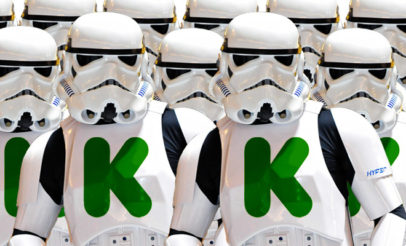
Our Ideal Superstar - Kickstarter Stats and Success
I must say that if their is a corporation out their that I look up to, it MUST be KICKSTARTER. Kickstarter has helped so many people and projects make their dreams come true, and some became billionaires even. Like for example Oculus VR Headset that raised $2.4 Million dollars on Kickstarter and then got bought out by Facebook Mark Zuckerberg. Real company like Kickstarter do amazing things. They reincorporated Kickstarter as a Benefit Corporation in 2015. Benefit Corporations are for-profit companies that are obligated to consider the impact of their decisions on society, not only shareholders. I don't know too many other Benefit Corporations out there? Kickstarter is really a pioneer in it's own right. Now, let's look at the Crowdfunding Stats in real-time. Stats $2,898,133,525 total dollars pledged to Kickstarter projects 120,459 Successfully funded projects 12,499,603 Total backers 3,989,100 Repeat backers 36,408,150 Total pledges This page is automatically updated at least once a day with the raw data behind Kickstarter. Metrics include funding success rates, amount pledged, and the performance of successfully and unsuccessfully funded projects. Statistics are available for the site overall as well as each of the 15 project categories. Category Launched Projects Total Dollars Successful Dollars Unsuccessful Dollars Live Dollars Live Projects Success Rate All 341,636 $2.90 B $2.53 B $331 M $34 M 4,579 35.74 % WOW Their is over 340,000 that launched a campaign with Kickstarter. That is a huge # for only being around for five years. And over 120,000 successfully funded projects ; ) Category Successfully Funded Projects Less than $1,000 Raised $1,000 to $9,999 Raised $10,000 to $19,999 Raised $20,000 to $99,999 Raised $100 K to $999,999 Raised $1 M Raised All 120,459 14,554 68,492 17,263 16,362 3,571 217 Lastly, I could have not said LOCODOR mission statement better at this point. So here it is; We built LOCOODOR to help bring creative projects to life. We will create tools and resources that help people bring their creative projects to life, and that connect people around creative projects and the creative process.
Read More
IDEAL = REAL: HOW TO IDENTIFY EARLY CUSTOMERS
So you have a solid idea, team, and market analysis under your belt, now it's time to accelerate the validation process. It's time to start selling. At this point you've made some noise with a set of friends that — let's be honest — are mostly there to support you. As long as you don't charge too much (or annoy them too much), they will likely be your customers. But, they are not the early customers that matter. Your ideal early customers will be (i.e. should be) friends and acquaintances further away from the center of your social graph. They are the people one or two connections away that want what you are offering and are willing to buy it and/or meaningfully engage with it. But who are these people, exactly? In the business world, there is no end to literature about developing your Ideal Customer Profile (ICP), but in the end, it comes down to consistency. We all make decisions from the emotional part of our brains, so that's precisely where you need to connect. Depending on your business model, the process of developing empathy with your early customers is nuanced differently: - If you're building a product/service for the general population right out of the gate, then you need to carefully pick your customer segment. In most cases you should actually develop three or more personas, then pick the one that you are going to focus on. It will change — it always does — but it's good to start somewhere. Put your empathy hat on and write a story for you and your team to modify as you go — If you're building the next Uber or AirBnB, then you have to carefully develop your profiles on both sides. Who is the buyer? Who is the seller? To win, you're going to have to focus more on the buyer side (e.g. the person buying the ride, or whatever) and ensure that your seller acquisition strategy doesn't suck. If you successfully acquire buyers, then it's relatively easy (but still not, you know, easy) to find & train people to be your sellers/providers. TARGET INFLUENCERS When you put this process into practice you and your team will be conflicted. You'll have a bunch of competing theories about your ideal customer profile, and you'll tend to be biased after conversations with “lots of people” who seem to confirm your vision. But at this point you shouldn't let a small number of conversations unjustly influence your hypothesis about your ideal customer profile. Listen to your team and “go with your gut” for your first draft. That being said, a smart strategy at this point is to target people of influence. If you land the leaders, you also land their followers. Finally, at the end of the day, your ideal customer profiles will always change and will rarely end up describing your actual customers. That's OK. The practice of writing down your hypothesis and relentlessly revising as you go is the most important part. The real people who make decisions to buy/engage with what you're selling will be a complex group, but honing in early on your customer segments and profiles will help you build and market a product that people actually want.
Read More
Wix Acquires DeviantArt, Pairing Wix Capabilities with Global Creative Community
Wix acquires online creative community DeviantArt NEWS PROVIDED BY Wix.com Ltd. Feb 23, 2017, 08:00 ET “DeviantArt has built an impressive online community that is incredibly loyal, highly engaged and regularly produces stunning art and design,” said Avishai Abrahami, co-founder and CEO of Wix. “The DeviantArt community is talented and robust and hungry for additional product expertise.” Acquisition Boosts Product, Brand and Traffic Opportunities DeviantArt will Retain Its Strong Brand and Continue to Foster Its Community Wix.com Ltd. (Nasdaq: WIX) has announced that it has acquired DeviantArt, one of the world's largest online communities dedicated to artists, art enthusiasts and designers. The acquisition represents inherent opportunities in key growth areas for Wix including product development, brand recognition and increased traffic potential. Wix will provide DeviantArt users easy access to powerful tools specifically designed to help emerging artists create and showcase their creativity online and build their brands. At the same time, Wix creatives and designers will have access to DeviantArt's thriving community of tens of millions of visual artists. Wix and DeviantArt share a vision to provide designers and artists of all types a platform on which they can create, manage and showcase their work online, grow their audience and build their own global brands. Wix will provide technology and marketing expertise to the DeviantArt universe enabling its users to further their reach and increase engagement, both online and on mobile. DeviantArt's focus on developing and fostering online collaboration and communities will provide Wix users a platform to engage with creative designers and artists across multiple mediums. Together the companies will strive to create an innovative gallery for artists globally, mixing world class creative with unmatched opportunities for design, display and distribution. "We founded DeviantArt to enable the creative spirit in everyone, creating a platform dedicated to the vision and talent of the community which could be shared with the world," said Angelo Sotira, Co-founder and CEO of DeviantArt. "This combined effort with Wix creates new opportunities for innovation never before seen on the Internet and an amazing super-charged offering to our community members. We look forward to being part of the Wix team, and we are humbled by the respect and love they have shown to our community." As part of this acquisition, Angelo Sotira, Co-founder and CEO of DeviantArt, will join the Wix management team. DeviantArt will continue to foster its community from its headquarters in Los Angeles, and all of its employees will join Wix. About the Acquisition Through this transaction, Wix has acquired 100 percent of DeviantArt's capital stock in exchange for approximately $36 million in cash, including approximately $3 million of assumed liabilities. As of December 31, 2016, Wix had $172 million in cash on its balance sheet. The transaction closed on February 22, 2017, and will be recorded in Wix's first quarter 2017 financial statements. Financial Outlook Upon this acquisition, Wix intends to invest in growing and enhancing the DeviantArt community and platform, including its user experience on desktop and mobile products and the DeviantArt mobile app. Wix also intends to invest in the integration of the platforms in order to create incremental value for its users. These investments will include the addition of headcount in R&D and sales and marketing throughout the year. DeviantArt's existing business will continue to operate and gain the benefit of this additional investment from Wix, adding more value over time. As a result of this transaction, Wix is making the following adjustments to its previous outlook for the full year 2017: Increasing its revenue outlook by approximately $8 million to $417 - $419 million Increasing its collections outlook by approximately $9 million to $461 - $467 million Investments in the platform are expected to decrease FY17 free cash flow outlook by approximately $8 million to $63 - $64 million. This estimate reflects further investment in R&D and marketing, integration costs, employee retention bonus payments and other transaction related expenses
Read More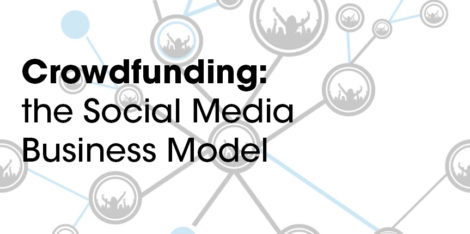
Make An Impact And Create Your Legacy With Locodor
Locodor is a vibrant social community of dedicated individuals working together to bring your creative ideas to life. We are a crowdfunding platform that connects innovators like you with investors and industry professionals willing to offer you all the support you need. The mission of Locodor is to help you grow your business and become more successful by networking with the right people. We want to support and strengthen the crowdfunding industry by making it easier for you to stay up to date, share important information, connect and collaborate with the right people on a platform exclusively for crowdfunding professionals. We know that obtaining finance is the biggest hurdle for most entrepreneurs and startups. If bank loan doesn't cover your need and you don't have any investors providing you financial support, thing can get quite tough in the long run for your startup. Online social crowdfunding platform like Locodor, enables startups like you, to raise funds from multiple backers, but that's not all. It allows startups to reach out to a large number of potential investors and interact with them. Locodor offers a variety of features to startups, and provides them the freedom to: Start a crowdfunding campaign for FREE, Add all their social media links on their profile to connect directly with investors, Promote their campaign to thousands of Angel investors and backers, Gain unlimited support and resources through the platform, Reach out to new markets that you would not get a chance to on other crowdfunding platforms. Locodor offers more than raising money for your project, it is about building lasting and fruitful connections with your angel investors. Sign up on Locodor today and take Control of Your Destiny! We look forward to welcoming you on board. Team Locodor
Read More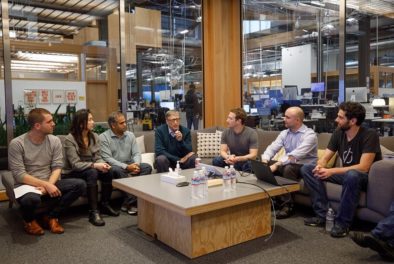
Mark Zuckerberg and Bill Gates discuss helping more people raise money on Facebook
From Mark Zuckerberg Facebook feed: "Bill Gates joined my product reviews today to discuss how we can help more people raise money for charitable causes on Facebook and how we can help more with disaster recovery. Thanks Bill for the great advice as always!" Even though Mark Zuckerberg is referring to Fundraising on Facebook, LOCODOR are excited about Social Media & Money Raising meshing together. Our motto from day one is "Together is Better" and we are sticking to this. At Locodor, we are building tools to help Crowd Founders connect with the people they want and share what they want, and by doing this we are extending people’s capacity to build and maintain relationships People sharing more — even if just with their close friends or families — creates a more open culture and leads to a better understanding of the perspectives of others in the Crowdfunding world. We believe that this will create a greater number of stronger relationships between Founders, Innovators, Startups and Backers. This helps Crowdfunding Campaigns get exposed to a greater number of diverse perspectives. By helping people form these connections, we hope to rewire the way people spread and consume information about their vision that they are creating. Even if our mission sounds big, it is starting small — with the relationship between two people in the Crowdfunding world.
Read More
General Electric GE Taps to find early-stage Startup investments
General Electric recently posted that it's tapping into a 500 Startups in upcoming classes and events. GE has already made huge acquisitions and owns few billion dollar Startups. But all these companies start somewhere. And GM is looking to find them early on in addition to the big investments they already make. So GM is now going to work with 500 Startups to track down a batch of companies within each class in order to continue to expand its touch-points beyond the areas it’s currently working. GM has made a number of big acquisitions and investments in the past few years. It picked up self-driving company Cruise earlier this year and dropped $500 million into Lyft, Uber’s biggest competitor. For the most part, GM acknowledges that it needs to figure out how to tap into new aspects of the automotive experience, CTO Jon Lauckner said. A GM spokesperson clarified that these are not seed investments, and that the investments — which will be done through GM Ventures arm — will be made at GM’s discretion at the company’s Series A round or later. The decision will be based on whether the company is successful. The intent is to give those startups access to mentorship in addition to what they’ll typically find through 500 Startups through GM’s network. GM will be seeking out 5 companies (though that is not a hard and fast number, Lauckner said) within each batch to make investments with 500 Startups. The firm is currently working through its 19th batch of companies, and a partnership like this could also help it further differentiate itself from other accelerators. In fact, 500 Startups recently entirely dropped the “accelerator” brand in an attempt to further differentiate itself. So while this is of course good for GM to get access to the 500 Startups pipeline, it’s good for 500 Startups to also find more added value it can provide to its batch companies beyond its marketing and growth help. Working with a firm like 500 Startups — which has seen hundreds of companies go through its program — can give GM access to a big pipeline of companies and the firm’s extended network to find new potential investments. 500 Startups works to find plenty of companies that are outside of domestic markets. With these kinds of investments normally come opportunities to get access to partnerships — or even acquisitions — down the line as it builds a support network for early-stage startups. Learn more about how we will Startups and Founders raise money and achieve their funding goal
Read More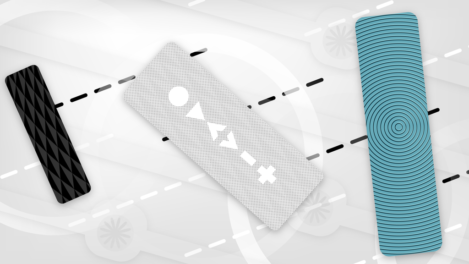
Jawbone is trying to raise more money - along with backers and strategic investors outside the U.S.
Jawbone is trying to raise more money, reaching out to equity backers all around the world. Jawbone looks to drop consumer wearables for clinical services -TechCrunch article. Make way for one more pivot from Jawbone. The fitness band maker that originally started out in headsets and later made speakers, has abandoned selling and supporting consumer hardware following a deluge poor reviews and media reports that it has run out of money. TechCrunch has learned and confirmed that Jawbone is preparing to shift its business yet again — moving from a focus on low-margin fitness bands sold directly to consumers, to a high-margin business to business to consumer model: a health product and accompanying set of services sold primarily to clinicians and health providers working with patients. As part of that change, Jawbone is trying to raise more money. Sources tell us that it’s been in conversations with its current roster of backers, plus potentially new strategic investors in the wider medical sector, along with new investors outside the U.S. We do not know how much Jawbone is raising — Jawbone declined to comment for this article — but from what we understand, those deals are still in progress. That is to say, funding is not closed, although two sources claim it’s at an advanced stage. The company to date has raised what looks like $951 million from a storied list of investors that include Andreessen Horowitz, Sequoia, Kleiner Perkins, JP Morgan, Mayfield and Khosla. But it has also burned through most (if not all) of that, with very little to show in returns, as it has found it hard to make a lucrative dent in an already challenging climate for wearables. Its last round of $165 million a year ago was made at a valuation of $1.5 billion — half of its peak valuation of $3 billion. Filings from investment firm Blackrock, which had provided to Jawbone last spring around $300 million in the form of a convertible note, seem to indicate that the firm ascribes no value to its stake. Of course, it’s not just Jawbone that has felt the heat. A recent report from eMarketer revised down growth estimates for the whole sector by nearly 40-percent, with many products failing to find a critical mass of users beyond early adopters; you can see the fallout also in rocky results from Fitbit (along with its recent acquisition, Pebble). There have been leaks going back to last year about a shift to the clinical market. Signs of empty promises or just that it’s really working hard at the pivot? In either case, Jawbone believes that it might have an advantage. Two companies — Omada and Forward — have created interesting models that could offer Jawbone a model for a way forward, moving beyond the simplicity of consumer wrist-worn trackers. “There are a lot of things to learn about the interactions between health wellness and consumer electronics,” one source close to the company said. He added that consumer hardware is just too challenging, except for the very biggest companies. “If you think about what a good consumer electronics company looks like, it’s 30-percent margins, annual release cycles and huge risk. It’s turned into a blockbuster game,” he said. “But folks in this other area, like Omada and other services, they have a human involved but with a nearly 100-percent contribution margin. It’s wildly different economics. Every wearable company today will be posed with this question: Do I want to play in consumer and narrow margins, or healthcare and service and make incredible margins but with possibly a lot of upfront fixed cost.” ‘Still committed’? A look at Jawbone’s public profile today shows not only how the company has been failing a lot of consumers of late, while trying to keep the business running until it can catch the next moving train, its newest pivot. Jawbone’s social media accounts offer what you’d more or less expect from a health startup: fit people rock climbing or doing yoga. In one image, two women are tossing snowballs at one another, on either side of a snowman. Another two are laughing while drinking beers on a couch. Just happy, healthy people enjoying their lives. A fitness band is rarely pictured, but always implied. But scratch the surface on any of the placid stock images and you’ll find something more telling: an army of people who use every post as an opportunity to express their frustration with the company and its lack of response about its faulty products, responding with angry emojis, barbs about the company and pleas for help. Jawbone has seemingly gone silent over the course of a year, a far cry from the company’s last blog post of substance, dating back to June 2016, when CEO Hosain Rahman asserted, “We’re Still Committed.” The executive’s assertions were an attempt at addressing growing pushback from customers and press, following reports that the company was unloading assets ahead of a sale or liquidation. “Unfortunately, not everyone has access to what we witness everyday,” Rahman stated. “As some of you may have recently seen, there have been a few incorrect media reports that Jawbone is exiting the wearables business or going out of business altogether. These reports are unequivocally false.” However, it turns out that Jawbone has been quietly selling off some assets, specifically part of its once-popular Jambox speaker business, as Business Insider reported in September 2016. A source tells us it is now completely gone. Its fitness bands have similarly been wound down. The last time Jawbone shipped a major upgrade to its wearable line was April 2015, with the UP4. In the meantime, those who have been trying to work with customer support over previously purchased faulty bands have found their questions left dead in the water. And then there’s the company’s “F” rating on the Better Business Bureau’s site. Beginnings Jawbone’s origins date back to 1998/1999, founded by Rahman and fellow Stanford student Alexander Asseily, a serial entrepreneur who also helped launch the consciously minded social media app State.com and Elvie, “an activity tracker and app that is transforming how women do their Kegels.” He’s also the non-executive chairman of Azimo, a money-transfer service. The company began life as Aliph/AlipCom, derived from Aleph/Alif the first letter of Semitic writing systems, a nod to the company’s language roots. The pair would soon secure DARPA funding to design communication equipment for noisy field environments, leveraging that research to create a noise-canceling headset for phone calls. An early prototype reportedly scored the Aliph team an audience with Steve Jobs, though the late-Apple founder’s response to the wired system was typically blunt as Rahman remembered it in a 2015 interview, saying, “The only place anyone would ever use a clip like that is in your mind.” The company’s innovations did manage to capture more ardent support of designer Yves Behar, who would come on board as VP and design many of much of the company’s products and packaging. The company debuted the Jawbone headset at CES in 2007. They branched out from headphones in 2010 with the hybrid Bluetooth speaker/speakerphone, the Jambox, releasing the first UP fitness band in 2011 — the same year it officially adopted Jawbone as its company name. Crunchbase Jawbone Founded1997 OverviewFor more than a decade, Jawbone has developed products and services for the mobile lifestyle unparalleled in their innovation, ease-of-use and sophistication of design. The company is the creator of the award-winning and best-selling premium ICON [Bluetooth headset](http://www.crunchbase.com/product/jawbone); the inventor of NoiseAssassin® technology, the world's first and only military-grade noise … LocationSan Francisco, CA CategoriesWearables, Fitness, Consumer Electronics, Personal Health, Hardware, Mobile FoundersAlexander Asseily, Hosain Rahman Websitehttp://jawbone.com/home Full profile for Jawbone Growing pains In the decade since the company released the first Jawbone headset, it’s quickly enamored itself among Silicon Valley startup culture. It was at the forefront of a number of growing spaces, most notably wearables. But in a classic case of being first possibly being too early, Jawbone has had a hard time staying at the top of the wearables market, and it’s been lagging for a while: back in December 2015, IDC didn’t even rank Jawbone in its top five wearable vendors, giving Jawbone less than a 3 percent share in a massively fragmented (and, don’t forget, small) market. No surprise that its valuation has been hurting so much. The funding that we’ve heard Jawbone is trying to close now would match up with reports from last year also noting that it was looking for more cash. But more skeptical insiders say that the bigger and more optimistic story about a pivot also belies some of the dire business problems that the company has had. One claims that at its peak the company was burning $6 million a month, and that more recently it has received bridge loans from current investors to meet costs. The company’s reportedly dire financial straits were again brought to light in the wake of an ongoing patent suit with arch-rival Fitbit, which sought to block Jawbone from selling its devices stateside (itself following a suit that accused Fitbit of stealing Jawbone trade secrets). Fitbit ultimately dropped the suit, citing Jawbone’s precarious finances. “SEC filings of one of its biggest investors now value Jawbone shares as worth nothing,” the company said in a filing with the ITC, “as well as indicate that Jawbone has filed for bankruptcy or is in default.” Rather than let sleeping dogs lie, Jawbone fired back by way of lawyers, calling the suit “baseless” and essentially accusing Fitbit of keeping things going for financial gain and to gain insight into unreleased devices. Fitbit calls into question the financial stability of Jawbone by relying on speculative press reports and third-party sources rather than any information directly from Jawbone. The publicly filed motion even goes so far as to assert that Jawbone has declared bankruptcy, despite the absence of any bankruptcy petition to cite and the fact that discovery obtained in this Investigation even in the last week is inconsistent with a company that has declared bankruptcy. One source tells us that Fitbit tried to acqui-hire Jawbone very recently — a conversation that never went very far because of the animosity between the two and the fact that Jawbone believes that there is still value to its business. Earlier, such talks were dismissed by a source as being “low-level.” But the story doesn’t seem to end there. Whether it’s keeping up appearances in hopes of securing more funding for a pivot or genuinely building the next phase of the company already with money it has held back from putting into its current “live” business, or something between the two, apparently there is more to come.
Read More

KickStarter acquires video streaming startup Huzza a livestreaming feature designed to give creators direct communication with their community
KickStarter is slowly moving towards a more open-source Crowdfunding platform with it's new Kickstarter Live feature. This is great news and we at LOCODOR are excited to see these changes. Our goal is to bridge together founders and backers to be able to communicate in an open-source platform. video streaming startup Huzza: [video width="720" height="480" mp4="http://www.locodor.com/wp-content/uploads/features-interactive-cfc26d67a143f4a204057ed9874aaec9063601decc95062f51606594e14f15ce.mp4"][/video] Here is the news that was posted 2 hours ago on TechCrunch. Kickstarter acquires video streaming startup Huzza and opens a Vancouver office | TechCrunch Couple of pieces of news out of Kickstarter headquarters this morning. First, the crowdfunding service has announced the acquisition of Canadian video streaming startup Huzza. The purchase follows a close collaboration between the two parties that led to the launch of Kickstarter Live back in November, a livestreaming feature with real time feedback designed to give creators a direct channel of communication with their community. According to Kickstarter, campaigns utilizing the platform have enjoyed a success rate of 74-percent, twice the rate of the average campaign — though, to be fair, those using the video service were already likely more plugged in and engaged than the average to begin with. Whatever the case, the Huzza acquisition marks the second ever for Kickstarter, following the purchase of music community service Drip back in March. The acquisition means that Huzza’s founders Justin Womersley and Nick Smit will be joining the staff to help run Live, opening Kickstarter’s first international office on the startup’s home turf of Vancouver, British Columbia. Kickstarter will be hiring a bunch of engineers and designers locally to help build out that team. The company has already listed a number of Vancouver job openings to its site. As for the existing Huzza service, that will be sunsetting by the end of the month as the team shifts its focus entirely to Live.
Read More
Alibaba’s local commerce platform, Koubei, raises $1.1 billion
Alibaba just reported a very impressive quarter of business, but there was a small nugget of notable funding news tucked away in its announcement. Koubei, an Alibaba affiliate company focused on enabling local commerce, closed a $1.1 billion financing round this month. The funding was led by Silver Lake, CDH Investments, Yunfeng Capital and Primavera Capital, Alibaba said. It isn’t clear what date it was completed other than it happened in January. In October, The Wall Street Journal reported that Koubei was in the process of raising $1 billion, but this is the first time it has been confirmed. The Journal claimed Koubei would be valued at nearly $8 billion, but we haven’t been able to verify that yet. Koubei is a joint venture founded in 2015 by Alibaba and Ant Financial, an Alibaba offshoot that manages its Alipay service and other financial tech initiatives. The idea behind it is to generate business for local retailers by bringing them online, while also offering new commerce opportunities for consumers. For example, helping a local pizza chain reach new customers or making a pop grocer more accessible to people with limited time to go in person. Alibaba and Ant Financial both put RMB 3 billion (worth around $480 million at the time) into Koubei when it was created, but this round marks the first money from external investors. According to Alibaba’s latest data, $10.5 million (RMB 73.1 billion) was spent through Alipay on the Koubei service during Alibaba’s Q3 period. (Koubei is integrated inside Alipay.) The firm said that figure was a 52 percent increase on the previous quarter, but it isn’t saying how much money Koubei is losing right now. You can bet your bottom dollar that it is burning a lot right now since there is plenty of competition in the market. Plus, Alibaba can afford to speculate to accumulate and it is actively diversifying its revenue streams to lessen its dependency on its core e-commerce services. Meituan-Dianping, a company formed by a multi-billion dollar merger, is the biggest fish in China’s offline-to-online pond. One year ago, it raised a $3.3 billion funding round at a valuation of $18 billion. Back then in January 2016, it claimed to have processed RMB 170 billion ($25.84 billion) in gross merchandise volume during 2015. It added that it was serving 150 million monthly users and handling around 10 million orders each day. That puts some perspective on Koubei’s data. There’s also Baidu, which ploughed over $3 billion into its service in 2015, and Ele.me, which counts Alibaba as one of its investors. Alibaba and Ant Financial — those two again — made a $1.25 billion investment in the company last summer, but it appears that the idea is for Ele.me to work with, not against, Koubei. Given that competition it is no surprise that Alibaba was keen to bring in further investment. The e-commerce giant said that the funding round “provides Koubei with a strong capital base to execute on its aggressive growth strategy.” There’s plenty of precedent for Alibaba affiliate companies raising money from investors. Ant Financial, which is tipped to go public, pulled in $4.5 billion at a massive $60 billion valuation last year, while logistics affiliate Cainiao raised a round that values it at a reported $7.7 billion. Posted Jan 24, 2017 by Jon Russell (@jonrussell)
Read More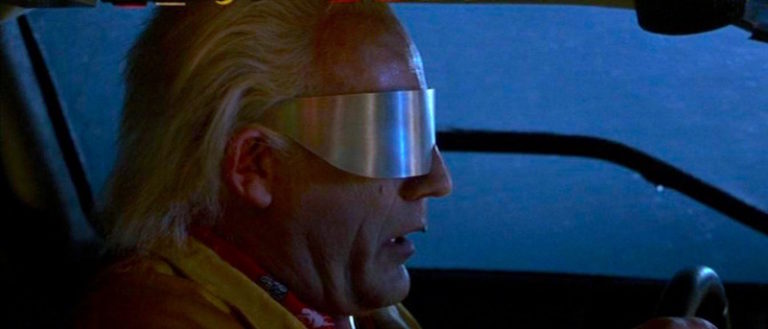
Virtual Reality Shopping: Going Back To The Future To Revolutionize Commerce
How we shop is changing...people no longer solely rely on direct mail and physical retail to purchase goods and necessities, and are becoming increasingly comfortable with buying goods online. And as smartphones and tablets have become common, sales from desktops have declined. According to Capgemini, mobile now accounts for 40% of all retail sales. There’s an interesting pattern to be noted here. Mainly how we’re “putting our foots in our mouths” with regards to our oscillating assumptions of technology’s influence on our buying behaviour. 35 years ago, the consensus was: “A home computer? Why would I ever want to buy one of those.” Never mind buying anything online. 8 years ago--like the predictions of a mental asylum patient for the end of the world--people ridiculed the iPhone. Yet, here we stand in 2015 with millions of iPhones sold. History doesn’t lie. And it tells us that, just because we can’t currently wrap our heads around a new technology, or understand how it can impact us; that doesn’t mean it isn’t viable or will not be useful in the future. Now new waves of technology are crawling out of their primordial ooze, and are ready to make their debut as viable additions to the way we shop. I'm talking about Augmented and Virtual reality. [krown_button url="http://www.locodor.com/projects/vrmatch/" size="medium" style="color" target="_self" label="VR MATCH Campaign"] Store owners will let customers try clothing and accessories in a virtual “store”, place furniture into their customer’s houses within an app on the smartphone, and show people how to assemble and use products step-by-step with “live” customer support. They’ll let customers flaunt potential purchases to friends, and make their brands more fun, personable and engaging. They’ll crank up the potency of their storytelling, segmented marketing, cross-selling and upselling. In essence, store owners will soon be bridging the gap between physical and online retail. Sounds like a crossbreed between a marketer's deepest desires and a tech geek’s saliva-inducing fantasies, right? But it’s not. Today, top brands like, Lego, Rayban, BMW, North Face and Marriott Hotel are testing the waters with augmented and virtual reality. So before rushing into their futuristic applications, let’s look at how they are currently being used. Virtually Furnishing Homes and Helping Make Decisions When homeware retailer Ikea conducted research on buyers, they found that: 14% of customers have bought wrong sized furniture for their rooms Over 70% say they don’t really know how big their homes are And 33% admit to being confused about measuring up To help customers battle this “square peg round hole” syndrome, they took advantage of AR technology and merged it with their Ikea Catalogue app. The app (which is downloadable on smartphones and tablets) allows customers to virtually fit furniture in their homes before ordering. Customers can test up to 90 products and make decisions based on style, size, shape, color and positioning. To use it, you place the catalog in the space where you’d like to position the furniture. The app then scans the size of the room and the catalog, and scales a 3D representation of the product to the screen. If the “furniture” needs rotating or adjusting, you adjust the catalog accordingly. Last year Ikea reported that it has “resulted in 8.5 million downloads, with more than 42 million visits to the digital catalog via the app or online”. And AR technology related to homeware is already evolving. Cimagine, a specialist augmented ecommerce company, has released an advanced version of the Ikea Catalog app which no reference points or anchors are needed. It just scans the user’s surroundings and shows the product. The app can be integrated into ecommerce and mcommerce product pages with a single line of code. Making it easier for online furniture and homeware retailers to use. Beautifying Customers Online According to James Bergenstein of The Science Project “Virtual reality and augmented reality shopping still isn’t to a point where you experience the same sensuality of trying on clothes and seeing how they complement the contours of your body”. But it’s getting closer. FaceCake’s software Swivel, is proof: Customers enter a virtual dressing room. And with a few lazy swipes in front of a screen, they see how different dresses, scarfs, necklaces and accessories look on them. So how does it work? A computer/phone camera, or a Microsoft 360 Kinect scans the customer into a chat-box-style video screen. Clothing, jewelry and makeup is then selected on-screen and placed on to the customer’s body. Shoppers can also raise/lower their arms, turn around, and experiment with what fits best. And by snapping images of their possible new outfits and uploading them to social media, they can get quick feedback from friends and family, making the virtual experience feel closer to the real thing. Swivel also includes an engine that recommends items to shoppers based on both, their personal preference and behavior in the virtual fitting room. The software looks at: How long the user spends looking at a specific item What the user shares on social media What the user tries on more than once This is a nice way for stores to track their customer’s preferences. And increases the chances of product recommendations that shoppers actually like. Augmented reality is giving a brick-and-mortar advantage to online fashion retailers. And it has only just begun. Elevating Efficiency And Diminishing Logistical Time Drains DHL’s recent pilot program used smart glasses to test “vision picking” in one of their Netherland warehouses. Pickers were equipped with head mounted displays like Google Glass (which is now being distributed only at workplaces) and the Vuzix M100. An interactive interface then showed where items belong, and gave pickers real-time graphical information about aisles, product location and quantity. Image via DHL The results? Enhanced staff performance and less errors: The implementation of augmented reality boosted picking efficiency by 25%. DHL also believes that AR will enhance other areas of business. “The technology significantly supports our staff and brings exciting value to our customers. However, this is just the first step in our innovation journey as we believe augmented reality will become relevant for even more supply chain areas” says Jan Willem of the DHL supply chain Benelux. AR and VR Will Enrich Day-to-Day Activities Augmented and virtual reality will stop being tech novelties. They’ll be as common as smartphones, tablets and PCs in the next 4-6 years. The following statistics and projections support this theory: According to Digi-capital, the augmented reality market is projected to generate $120 billion dollars in revenue by 2020. Let us know if you have a VR company and looking to raise money and/or are interested in investing in one? [krown_form label_name="Name" label_email="Email" label_subject="Subject" label_message="Message" label_send="Send" email="" success="" error=""] Statistica forecasts active virtual reality users to reach 171 million in 3 years time 60 million users across smartphones, tablets and smart glasses will use augmented reality apps, says Juniper Research Research from the Digital Marketing Bureau states that over 864 million smartphones have AR technology enabled in them According to CCS insights, hardware shipments of VR devices will increase from 2.2m in 2015 to 20m in 2018 And tools like Google Cardboard are already making the dive into virtual and augmented reality easier. Google Cardboard allows users to experience virtual reality on their smartphones for only $20-$30. And it’s already stacking up sales... Last year Google released a post celebrating the shipping of 500,000 units. This year, their app has over 1 million downloads, over 30,000 ratings, and averages 4.2 out of 5 stars. On a related note, Google owned Youtube has also been experimenting 360° video formats that use a smart phone's accelerometer to detect the phone's position, and let it serve as a window to video world. Brands like Gatorade and Budweiser have produced content that showcases just how engaging this format can be. (Note: These videos are best viewed on mobile, through the Youtube app.) So, we know AR and VR are growing in popularity, but how exactly will they impact the ecommerce world in the next 5-10 years? They’ll Inspire Riveting Stories and Energize Customer Experiences AR and VR transcend mere technological evolution. They actually penetrate the realm of deeply-rooted psychological and emotional needs that are necessary to motivate a buying decision. Think about it: If consumers base their buying decisions mainly on feelings and experiences, and direct touch interface devices (like tablets and smartphones) increase psychological ownership, imagine how immersive technologies like AR and VR--that not only involve touch, but push the boundaries of technological interactivity--will springboard the power of stories and emotionally driven selling to unchartered emotionally engaging heights? Case in point; for a wailing child, the patching up of bleeding cuts doesn’t sound like a cause for fun, does it? But it can be. With Band-Aid’s Magic Vision app it can trigger joy, laughter and precious bonding time: (AR technology turns pain into pleasure) Parents place a Muppet band-aid on their kids and scan it. An interactive Muppet character then appears on screen and allows kids to: Snap up photos with Miss Piggy as she struts along the red carpet Swing Kermit the frog while he plays his banjo Shake a giggling Gonzo off the screen This dulls pain, creates a glee-filled event between parents and kids, and transforms a “meh” product like Band-Aids, into an interactive experience that flips cries into giggles. AR is also helping the Sunshine Aquarium create colorful experiences from a grey necessity. The aquarium’s foot traffic was taking a nosedive. Potential customers were being tempted by Tokyo’s immense distractions. To prevent themselves from drowning among the noise, they needed to cut through the clutter and “peacock” their business. Their solution? Use people’s natural attraction to cute animals to overpower distractions and guide them--with street smart AR penguin escorts: (Feeling lost? No problem, AR penguins will escort you to your destination) Once near the aquarium, customers download the penguin NAVI app and follow a cute group of on-screen penguins to get their. This AR escapade transforms boring point-to-point travel into an enjoyable adventure which initially boosted foot traffic by 152% (and still reels in business); despite their being no change in exhibition content. The above stories are just microcosms of how the ecommerce world will upgrade in interactivity, personality and storytelling ability with AR. When it becomes a popular marketing tool...AR will stimulate interactive story driven experiences that inject a heavy dose of personality into the world of ecommerce. For example, AR can be used to magnify Vat19’s cool and fun personality: Image via Vat19 Imagine you’ve just landed on their rubber band gun page. After a few seconds of reading, you’re about to leave. But before you can, the on screen text fades…and an office worker springs out from behind a desk while aiming his rubber band gun at you. A mischievous grin forms on his face. He pulls the trigger, and the background blurs as a rubber band hurtles slowly towards you… Then right before it “hits” you, you’re asked if you’d like to use AR equipment to retaliate. You click yes and end up battling it out. A sort of rubber band version of this concept video here: (AR aliens invade an office and force an employee to take up arms) Compare the interactive rubber band warfare above, to being greeted by a pop-up. Which of the two are you more likely to remember and tell your friends about? The rubber band gunfight right? Because it was a fun activity you were engaged in. It was an experience. Now the whole AR pop-up gaming concept might seem odd, but the ecommerce world is already using games to power up marketing. Augmented reality will simply make those games more interactive and “real”. And--as the real world examples above show--AR games are one of many ways for brands to tell stories, create emotionally engaging experiences, and convey their personality. Consumers Will Peruse Malls and Custom Products From Home In the the next 5-10 years, it won’t be unlikely for people to browse virtual ecommerce stores from their homes, pick up and look at shelved products, and then purchase “in-store”. Just like in this concept video from Chaotic Moon Studios below, where a guy uses Oculus Rift to enter a virtual shopping mall and grab a gift for a friend: Please remember this is just a third party’s preview of the possibilities. It’s not in development by Facebook or Oculus. Here’s a similar demo product from UK superstore Tesco: Even though the graphics are poor, it’s often because the demo-tech is a proof of concept, not because computer graphics are incapable of rendering life-like images. In fact, CG can render life-like images so well, that their use has tiptoed right under our noses... Above is a screenshot taken from a video breakdown of CG effects. Now, is the shot practical, or is it CG? If you guessed CG, you’re right, but just to what extent the shot was computer generated? The point is: Poor graphics won’t be too much of a problem once we’re past proof of concept demos and VR becomes common. Also, these are the most obvious use-cases. As more creative people adopt it, and how we use it matures, use-cases may become less obvious while the immersive opportunities grow. For example, imagine the product placement opportunities if Ikea sponsored The Sims? Or Nike sponsored Fifa 15, and let you test their trainers and sports accessories while virtually kicking a soccer ball? Product placement aside, VR can also be used to showcase or preview high-end, and heavily customizable products to shoot up customer satisfaction. A concept similar to this virtual jewelry store app created by Next Galaxy: (A great way to combat buyer’s remorse if you ask me) According to CEO of Next Galaxy, Mary Spio “This is the tip of the iceberg when it comes to the potential for VR to revolutionize shopping and e-commerce. By providing the ability to preview content in new ways, our technology could dramatically improve sales and conversions." For stores dealing in customized goods, like gaming controllers, furniture or jewellery, virtual reality will be a great visual aid. Instead of just wondering if selections look good, customers will see for themselves in real-time by slipping on their VR headsets. Customer Service Will Untangle and Customer Support Debt Will Shrink Ever contacted your internet service provider to fix connection problems? The process is usually as smooth as a couch made from sanding paper. AR can help smooth out customer service problems. It is already enhancing the world of car/product repairs for companies like BMW and Mitsubishi: (Thanks to augmented reality, mechanics get a clear 3D look at problems and receive step-by-step instructions) In the future this can be adopted by stores to act as an easy alternative to complex instruction manuals. This has the potential to reduce customer support debt. Similar to how online knowledge bases that answered FAQs did when they first came out, because step-by-step AR instructions will just be an evolution of that. Customers Will “Try” Recommended Products At The Push Of A Button Image via Getelastic If you’re into hip sporty clothing and high end shoes, imagine being sent a link that models you in a crisp new tracksuit and fresh pair of white Jordans. If you have a taste for smarter clothing, imagine being sent a link that adorns you in a stylish suit (complimenting your physical features, body type, and skin tone etc.) with a matching Rolex watch. The scenario above is a strong possibility; because personalization is proven to boost conversions, and consumers value customized experiences. Augmented reality will just evolve the intensity and interactivity of those experiences. Now, you might think brands will face resistance when asking customers to scan themselves, or personal items, but people have become increasingly comfortable with sharing personal data. So in reality, this is less of a technology problem, and more of a positioning problem to be handled within marketing. With “Always On” services like Amazon’s Echo, Xbox One’s Kinect, and countless others that have been recently introduced, the market has proven it is ready for this new wave of technology, as long as it proves useful to their everyday lives and shopping decisions. Businesses Will Gain Extra Advertising and Marketing Oomph “Compared to traditional display advertising, those exposed to augmented reality are more likely to buy and do so at a higher price point.” says a study by Hidden Creative In the study, two groups of 100 people were shown different adverts for a kids toy. The first group saw a traditional video advert for the toy. The other was shown an AR version...the results? With the traditional advert, parents estimated the average price to be £5.99, and 45% said they’d buy the toy. However, with augmented reality, parents estimated the average price at £7.99, and 74% said they’d buy the toy. It’s important to mention that the study wasn’t exactly thorough. It only observed people's words, not their actions; and was conducted on a small group of people. This weakens its accuracy. But considering the effect augmented reality is having right now, and how it upgrades current marketing and logistical activities, you can appreciate how, and why, it will have a powerful impact. AR and VR Are Knocking... AR and VR are going to create a huge splash when they cannonball into into our daily lives. They’re going to revolutionize how businesses market themselves, engage with customers and operate. So what can those involved in ecommerce do to prepare? Ground your business in the the fundamentals of ecommerce. Strengthen your storytelling, streamline user experience and reinforce trust and credibility. Because if your foundation is weak, then no amount of new tech will overcome that. But if you’re standing strong, you’ll be primed to use augmented reality and virtual reality as powerful additions to your business and marketing arsenal. How do you think augmented and virtual reality will boost your business? Will you craft interactive stories? Boost your cross-sells and upsells? Or focus on improving logistics?
Read More
Putting Crowdfunding Industry on Blast – Especially MicroVentures new deal with Indiegogo for Equity Ownership.
There is a new ‘buzz’ going around in the investment game—crowdfunding investment. Though crowdfunding is a relatively new investment practice, existing businesses, individual, and startups are increasingly looking to raise funds through this method. The Global Crowdfunding Industry Raised $34.4 Billion In 2015, And Could Surpass Venture Capitalists In 2016. the equity crowdfunding sector, a Forbes analysis claims that venture capital averaged to roughly $30 billion per year; and in 2014 accounted for roughly $45 billion in investments, whereas angel capital averages roughly $20 billion per year invested. Equity crowdfunding was opened to the public in the U.S on September 2013, under the JOBS Act. But, it was restricted to ‘accredited investors only’; even then there was a $1 billion investment made online through equity crowdfunding while 2015 is estimated to have over $2.5 billion in total crowdfunded equity investment. Even though the growth is huge, the equity crowdfunding sector has some unavoidable flaws. Here is an example of a crowdfunding platform from the United States that is just starting to gain momentum due to their collaboration with Indiegogo, and how it will haunt their future if they will not adjust: MicroVentures is an Equity Based Crowdfunding Platform. They started their business in 2012, but just recently got attention due to Indiegogo. Here is a chart of MicroVentures website traffic in the last few months. data by: SimilarWeb You could notice that they increased their traffic tremendously ever since October, 2016 when they joined with Indiegogo. Before joining Indiegogo, they had no credibility. Checking their company review on GlassDoor shows a rating of 2.0 out of 5 stars, which is really bad. I personally reached out to MicroVentures to check on their investment opportunities in equity crowdfunding. All I got is a vague explanation without any transparency of their offerings. The real question is why is all their equity campaigns such a secret? You first have to verify your identity by loading two forms of ID’s, and then get ONLY certain information about the campaign you would invest in. Ask them that you would like to speak to the founder, and you will get nowhere. These are the leading reasons why MicroVentures will fail in the future; Lack of communication Lack of information Lack of support and updates Insufficient support from the platform Bad Customer Service Zero Clarity No community for investors to speak to one-anther and with the founders. The crowdfunding ‘buzz’ is apparent and here to stay with huge growth promises! At LOCODOR we are changing everything that MicroVentures represents. Yes, we are a lot smaller than them currently. But we have a mission & passion in our work and will do our best to disrupt the current model of Crowdfunding Platform norms. We believe in an open-source and open-communication between inventors and backers. LOCODOR is still in phase-one beta. Stand by for more and more changes ahead. If you feel that the Crowdfunding industry is missing transparency factor, please join our revolution and join us today!
Read More
Startup Equity Crowdfunding Grows in Europe (NESTA Report)
Article by: http://www.vccafe.com NESTA, the UK Innovation Foundation, has released the “The Venture Crowd“, a new report on crowdfunding as an investment tool. The report reveals that in 2011 alone, €1.5 billion was raised through crowdfunding for projects and businesses in need of funds. Amongst the different types of crowdfunding: Donation, Reward, Lending and Equity, the latter is on the rise as a fundraising mechanism for European startups. For the purposes of the report, Equity Crowdfunding is defined as follows: Equity crowdfunding is defined as the offering of securities by a privately held business to the general public, usually through the medium of an online platform. The model permits anyone to acquire a share in privately held businesses, i.e. those that have yet to float on a stock exchange, by allowing a business to offer a certain proportion of its equity for a set amount of capital it is aiming to raise. investors can then, through the platform, buy small parts of this equity stake. It’s worth noting that angel investment platforms such as AngelList and CircleUp are excluded from this definition. While they provide huge value to the ecosystem and increase the density of network amongst startup and angel investors, they don’t unlock new sources of funding and don’t face the barriers of equity crowdfunding when dealing with a large number of non-accredited investors. The motivation for equity crowdfunding as an investment is intrinsic, driven by a combination of social and financial return. The market opportunity for Equity Crowdfunding is ripe. Entrepreneurs are unable to access debt financing (bank loans) in the early stages of the startup, due to the risky nature of their business and typically lack of revenue. In the first stages, they rely on investments from FFF (Friends, Family and Fools) and business angels to launch their venture. Many companies shut down at this stage for lack of traction or their inability to raise funding. In order to achieve scale, startups require to raise venture funding, but to tap into VC funds, they would have had to reach a certain size or show the potential of exponential return. This is where equity crowdfunding comes in. If done correctly, it’s able to bridge the equity gap between the Angel stage (which seems to be moving upstream to higher amounts per cheque) and the VC funding (also moving up, typically starting from £2m rounds). Can equity crowdfunding bridge the funding gap between angels and VCs? While the increasing adoption of Equity Crowdfunding is encouraging for startups, the model faces several challenges. Below is a quote from the report: Multiple motives. Openness can come with a cost to startups, as competitors, or investors in competing businesses could take part in equity crowdfunding. In addition, there will be different kind of investors mixed in one round, each with their own motivation, which can be damaging for the startup in case of a potential exit. Adequate due diligence. Participants in equity crowdfunding aren’t necessarily savvy investors, and can therefore struggle to perform adequate due diligence on the venture. Investors need to find a way to detect fraud, and leverage the wisdom of the crowds to understand the potential of a business and the reputation of the entrepreneurs. Tools like Klout, LinkedIn Recommendations, TrustCloud, Kred and even eBay seller ratings can be leveraged to facilitate the process. A UK startup that comes handy in this process is DueDil. Getting the right investors – More experienced investors would be helpful in providing evaluation support for smaller investors and platforms may want to consider how to entice them. Attracting the right businesses is another important task. not all businesses will be suited to crowdfunding and as the model develops, evidence needs to be generated to indicate what businesses it works best for.
Read More